The A to Z of Opera
OUR GUIDE
Do you need to sort your choruses from your contraltos? Or your leitmotifs from your libretti?
Have a look through our handy guide to opera terminology below, and make sure you can tell your arias from your elbow!
Aria
A song for one voice which allows a character to express their innermost thoughts and feelings – like a soliloquy in a play.
Arias don’t drive the action forward; they are moments of reflection. One of the most famous examples is 'Nessun Dorma' from Puccini's Turandot.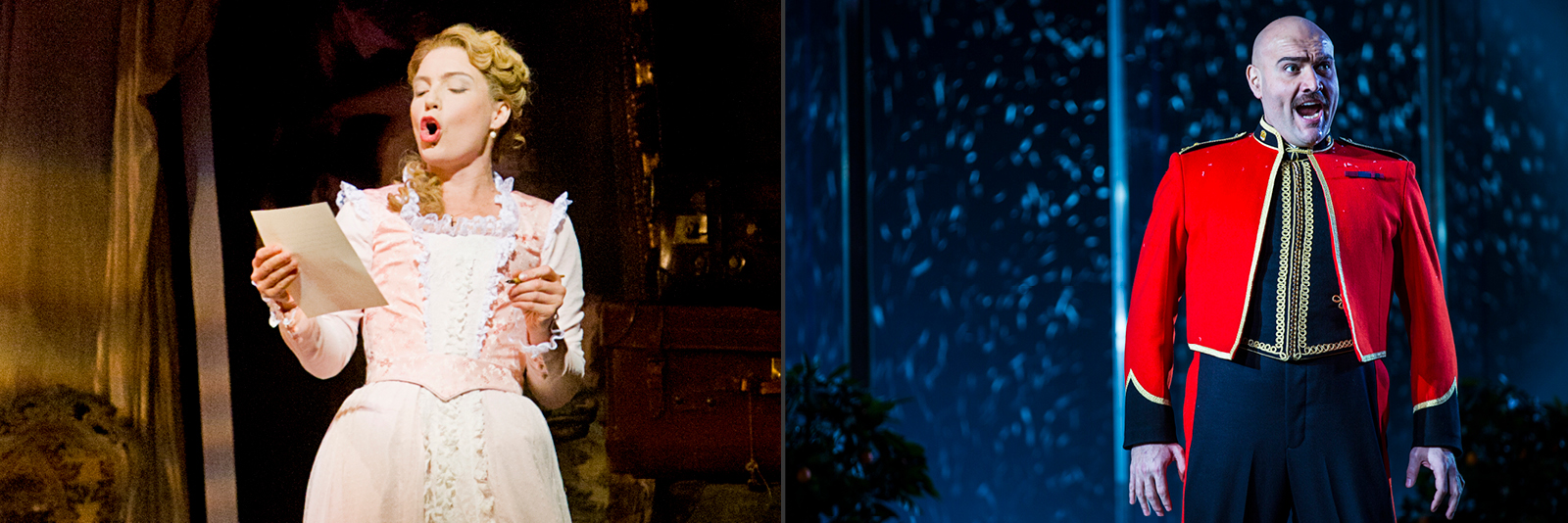
ARIA: RosinaThe Barber of Seville 2010, photo Mark Hamilton;
Polinesso Ariodante 2016, photo James Glossop.
BARITONE
A male singing voice that lies between bass (lower) and tenor (higher). Some of the best known baritone roles in opera were created by Mozart, including Count Almaviva in The Marriage of Figaro, and the title role in Don Giovanni.
BASS
The lowest male singing voice. Famous bass roles in opera include Vodník, the water goblin in Dvořák's Rusalka (pictured below performed by Sir Willard White) and Sarastro in Mozart's The Magic Flute. Basses can also often be found playing comic, blustering roles in opera, such as Don Magnifico in Rossini’s La Cenerentola.
BEL CANTO
From Italian for ‘beautiful singing’. A term used to indicate the elegant Italian vocal style of the late 18th and early 19th centuries in, for example, the operas of Rossini, Bellini and Donizetti, including the latter's Lucia di Lammermoor pictured below with Sally Silver in the title role.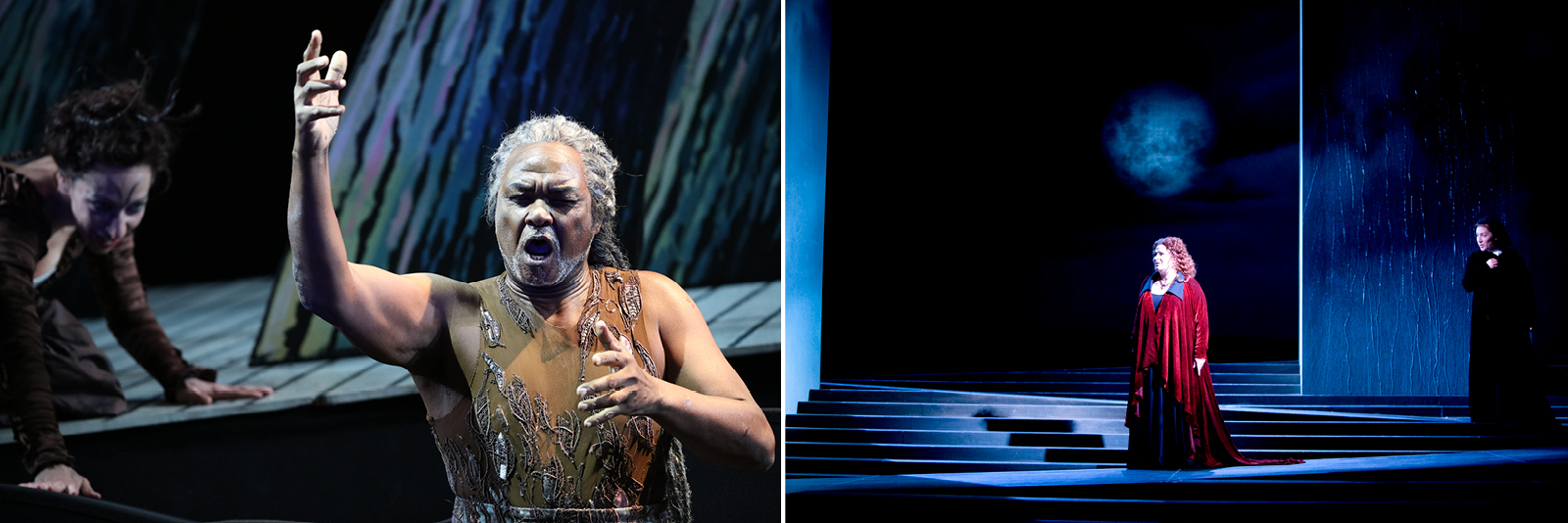
BASS: Sir Willard White in Rusalka 2016, photo James Glossop.
BEL CANTO: Lucia di Lammermoor 2007, photo Mark Hamilton.
CHORUS
A group of singers with more than one person singing each part, like a choir. The choruses in opera usually represent groups such as soldiers, priests, peasants, nymphs of the woods and so on – whatever is required by the story.
COLORATURA
From the Italian for ‘colouring’. A type of singing that includes lots of impressive trills, complicated runs, leaps and elaborate ornamentation of melodies.
CONTRALTO
The lowest female singing voice, between the female mezzo-soprano (higher) and the male tenor (lower). Relatively rare in opera, a well-know example is the title role in Rossini's La Cenerentola.
COUNTERTENOR
A male singing voice equivalent to the female singing voices of contralto and mezzo-soprano. Countertenors sing in a falsetto voice – like The Bee Gees' Stayin’ Alive.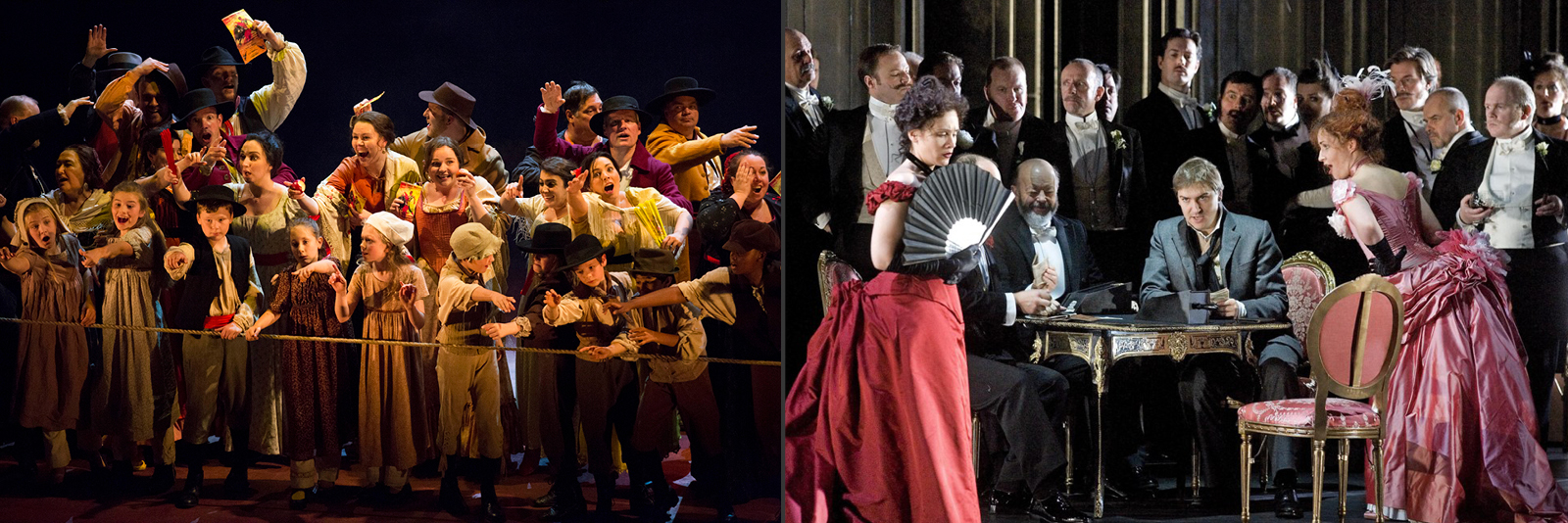
CHORUS: Carmen 2015, photo James Glossop; La traviata 2008, photo Drew Farrell.
DUET
A song for two voices. This is the most popular type of group singing in opera. Duets are used especially for lovers, but can also effectively express conflict. Carmen and Don José's duets in Bizet's Carmen are a good example of both of these options!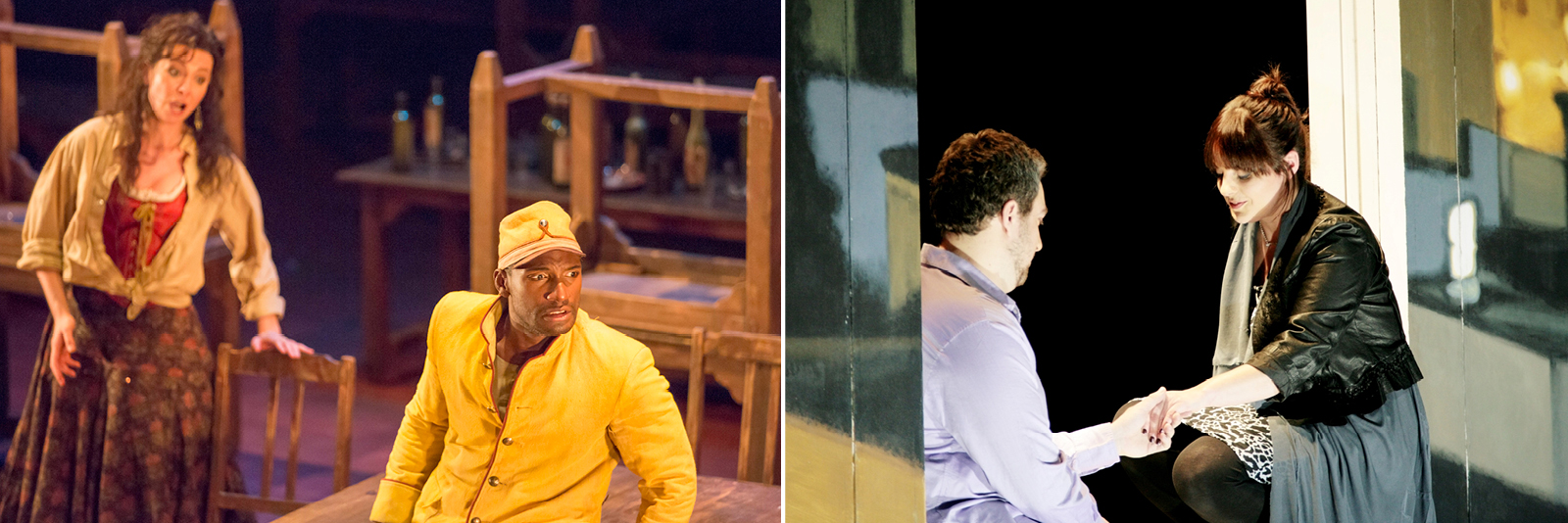
DUET: Carmen and Don José Carmen 2015, photo James Glossop;
Mimi and Rodolfo La bohème 2010, photo Eamonn McGoldrick.
ENSEMBLE
A piece sung by more than one member of the cast. Although the term can technically refer to a duet, trio, quartet, quintet etc, it is often used specifically to refer to any sung part of an opera in which a number of characters are expressing different emotions at the same time.
FINALE
The last part of an opera, or of an act of an opera. The finale is often a formal, extended ‘piece’ in which the plot works itself out.
GRAND OPERA
Mainly associated with operas of the 19th century, such as those by Verdi and Meyerbeer. They almost always have tragic plots, and are often characterised by magnificent sets and costumes representing glamorous or exotic settings. Battles, conquests or political upheavals often feature, all supported by impressive orchestral forces.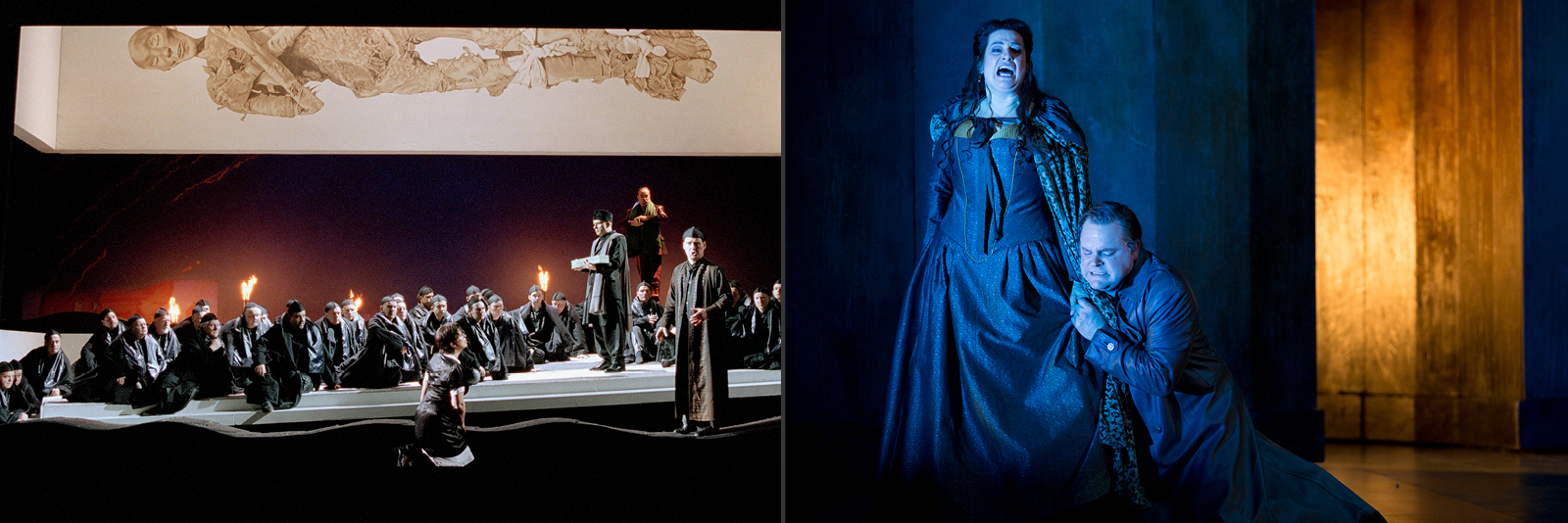
GRAND OPERA: Aida 2003, photo Bill Cooper; Il trovatore 2015, photo KK Dundas.
INTERLUDE
A short instrumental passage or self-contained piece that is often used to cover a change of scene or to move dramatically from one mood or atmosphere to another.
LEITMOTIF
A short melodic ‘idea’, sometimes of only a few notes, which is used by a composer to signify someone or something - like the music used in Jaws every time the shark comes near. Wagner developed the leitmotif to give unity to his works: in The Ring Cycle there is a leitmotif for every character, every significant emotion, every important prop, and even elements of nature including the river, fire, and the forest.
LIBRETTO
All the words in an opera, literally ‘little book’, the libretto is what many would call the lyrics or the text of an opera. Many composers worked regularly with the same librettist, much like songwriters and lyricists today.
MEZZO-SOPRANO
A female singing voice that lies between contralto (lower) and soprano (higher). Mezzos are often relegated to supporting roles or villains. Principal roles for mezzos are most commonly found in French-language operas, like Bizet’s Carmen.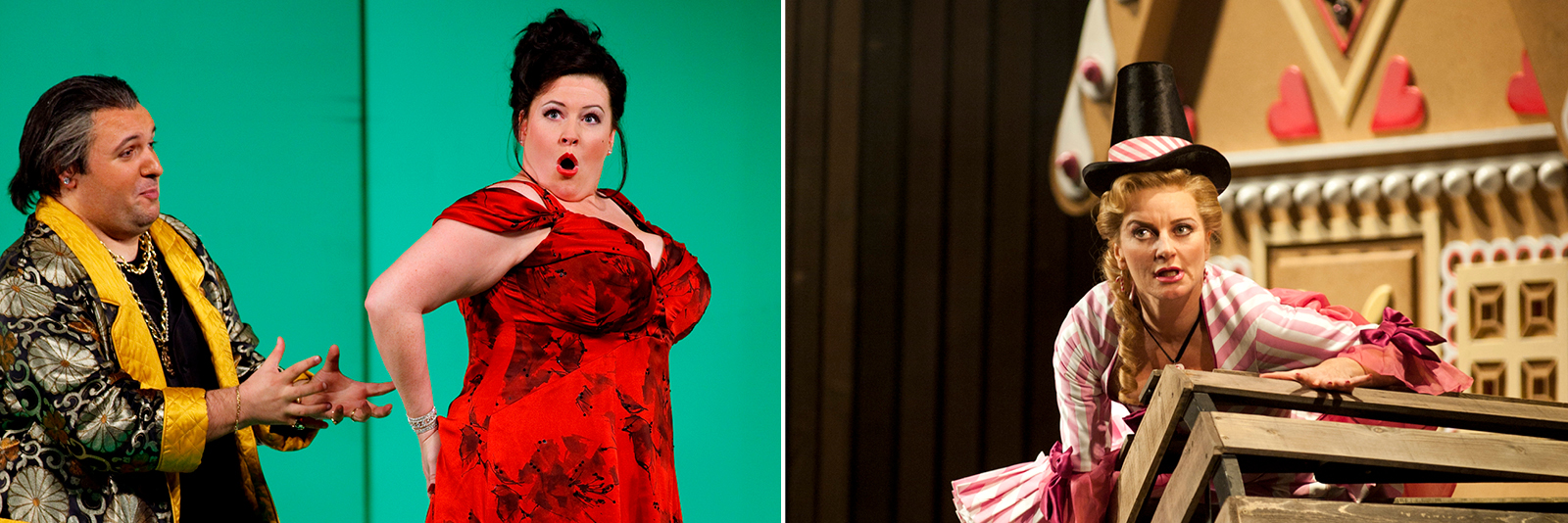
MEZZO: Karen Cargill in The Italian Girl in Algiers 2009, photo Drew Farrell;
Leah Marian Jones in Hansel & Gretel 2012, photo Richard Campbell.
OPERA
Opera comes from the Latin word opera, meaning ‘a work’. It is usually defined as a musical dramatic work in which the performers sing some or all of their parts: a mix of music, drama and spectacle, with music normally playing the dominant role. The art form first developed in Ancient Greece, where the chorus was used as a group of speakers to comment on the action. However, Italy is acknowledged as the true cradle of opera as we know it today. Hence the Italian language gives us almost all the operatic terminology in current use.
OPERA BUFFA
From Italian for ‘a joke’ (ie buffoon). The term was first applied to comic operas as they rose to popularity in Italy and were exported across Europe through the 18th century.
OPERA COMIQUE
This was developed in France in response to opera buffa. Despite its name, the plots are not always wildly hilarious, although a happy ending is invariably achieved, and the format includes spoken dialogue (not unlike operetta – see below).
OPERA SERIA
A term used by historians and musicologists to describe the noble (lots of royal and superhuman characters) and serious genre of opera that reached the height of its popularity during the 18th century.
OPERETTA
Very popular in the late 19th and early 20th centuries, operetta features light-hearted subject matter with pretty tunes and brightly coloured sets and costumes. Often seen as the bridge between opera and musicals, there is lots of spoken dialogue.
OVERTURE
A piece of music that acts as an introduction to an opera. In effect, the overture gets everyone in the mood for what’s in store. Most overtures use bits of the ‘best tunes’ which the audience will hear in full later in the performance.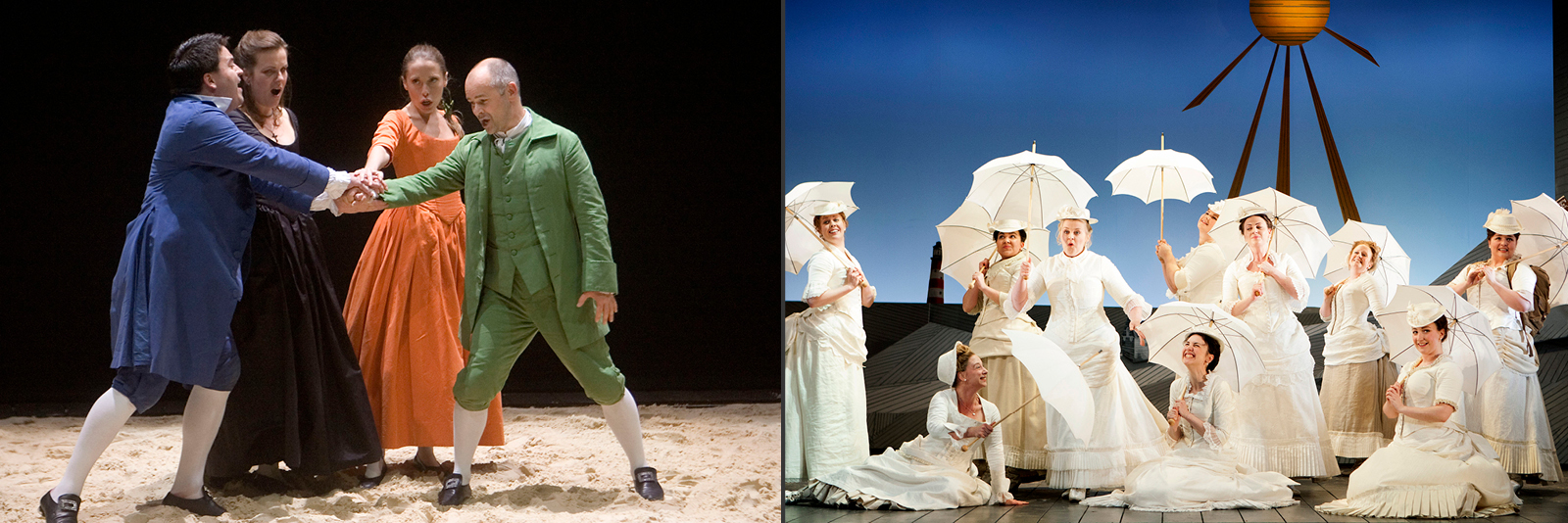
OPERETTA: The Pirates of Penzance, 2013, photo KK Dundas.
RECITATIVE (RECIT)
A type of ‘melodic speech’ that allows the singer to explain the plot between the arias, duets and choruses. It is very lightly accompanied by the orchestra.
SCORE
The musical notation for a piece reproduced on large sheets of paper. Singers perform from memory and individual players have their own music to read, but the conductor has the entire orchestral score, showing the notes played by each instrument in the orchestra, and the vocal parts too.
SINGSPIEL
A German-language music drama, popular in the late 18th and early 19th centuries, that alternates spoken dialogue with musical ensembles, including ballads or popular songs. The plots are generally comic or romantic, often with a magical or fantastical twist.
SOPRANO
The highest female singing voice. Sopranos often take the lead role in opera - hence their reputation for being divas. One of the best known sopranos of recent times is Maria Callas.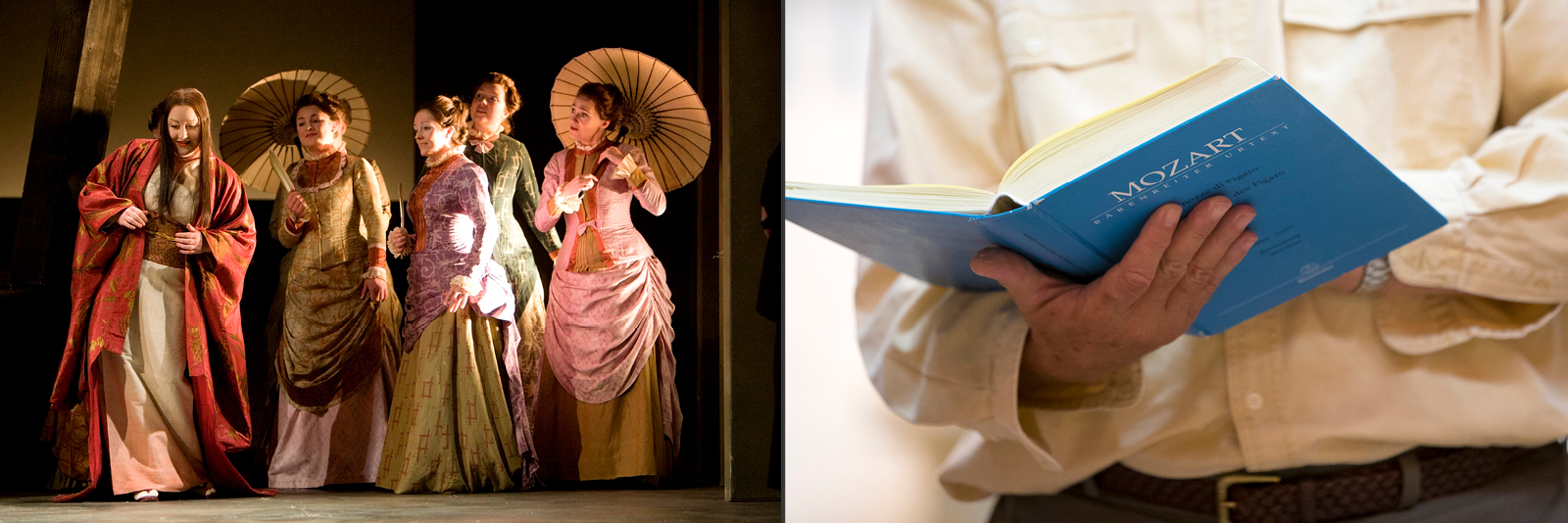
SOPRANO: Rebecca Nash in Madama Butterfly 2007, photo Tas Kyprianou;
SCORE: Rehearsals forThe Marriage of Figaro 2016, photo James Glossop.
TENOR
The highest male singing voice – though also see Countertenor. Tenors are often found as the hero of the piece, or the love interest.
TROUSER ROLE
A male character role performed by a female singer (usually a mezzo-soprano). Originally, these roles were written for singers known as castrati (singular: castrato) – male singers in the 17th and 18th centuries who underwent surgical procedure in order to preserve the high range of their unbroken boyhood voices. There are also some trouser roles deliberately written to be performed by a female, usually in order to exploit the many opportunities this gender confusion brings to the plot, such as Mozart’s cheeky pageboy Cherubino in The Marriage of Figaro.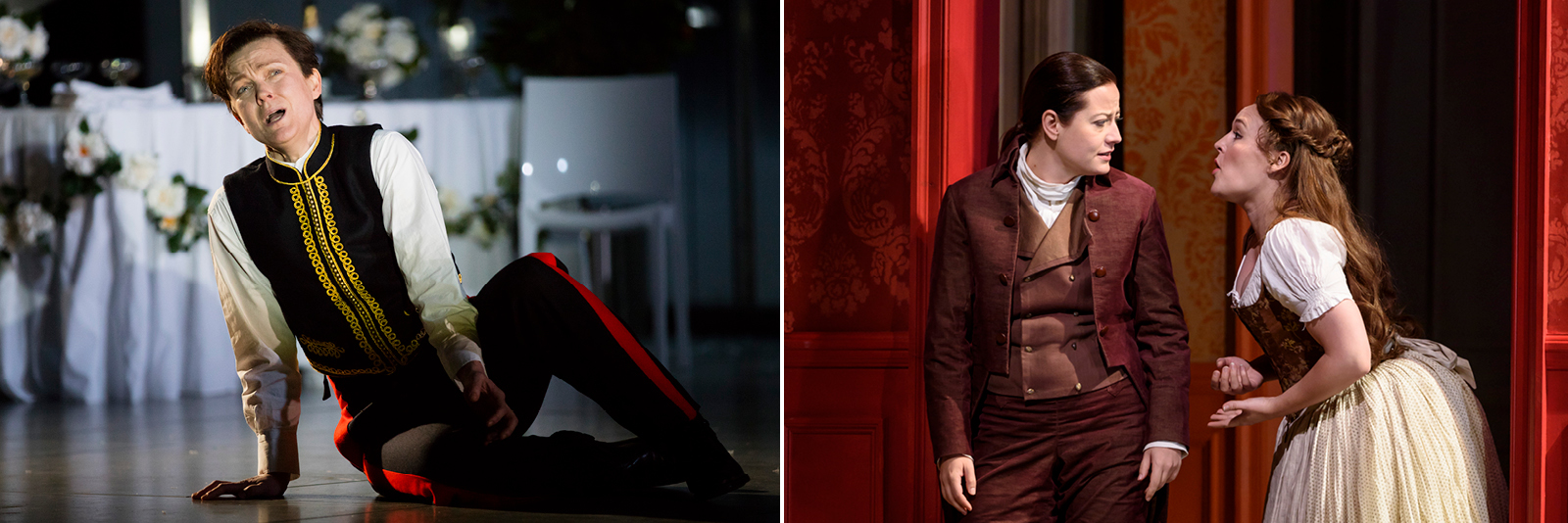
TROUSER ROLE: Title role Ariodante 2016, photo James Glossop;
Cherubino The Marriage of Figaro 2016, photo James Glossop.
VERISMO
From Italian for ‘realism’, this was a movement in Italian literature and music of the late 19th and early 20th centuries that reflected the naturalism or realism made popular by the French novelist Émile Zola.
Want to know even more? Read our History of Opera.